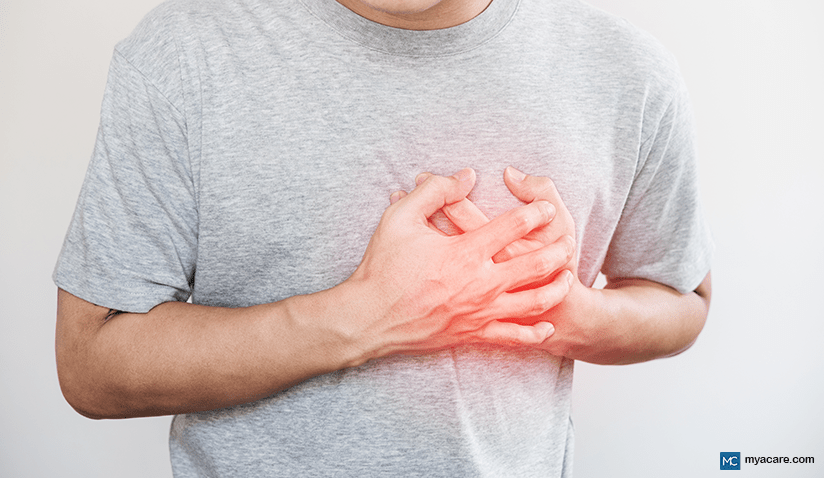WHAT YOU NEED TO KNOW ABOUT MENOPAUSE: OVERVIEW, HRT AND CUTTING EDGE TREATMENTS

Menopause is likely to be the only thing capable of making a woman miss the “good old days” of PMS and egregious chocolate consumption!
In spite of all the bad press, menopause is a temporary condition – a time of transition – and symptoms can range from mild to severe depending on the individual. For many women, the appropriate treatment can make all the difference during this time, largely helping to facilitate a peaceful journey toward feminine senescence.
Let’s take a look at what the Menopause could mean for you (or your spouse), as well as what treatment options are available.
What Causes Menopause Onset?
The first word that ought to come to mind here is ‘hormones.’
From the time we are conceived, the hormones inside of us work to propel our cellular chemistry and coordinate multiple processes, most of which pertain to growth, immunity and metabolism. As we age, our hormones fluctuate, giving rise to different stages of our physical development.
Through the progression of this hormonal dance, the ratios of hormones eventually begin to decline and the beginning of that decline in women is known as perimenopause – the stage just before menopause.
The two main hormone deficiencies responsible for menopausal symptoms are estrogen and progesterone. Testosterone and other hormones also tend to dip as women age, yet these are not associated with menopausal onset but rather with aging in general.
Menopause Symptoms
Since all the sex hormones are used by every cell in the body, the symptoms of menopause can also be unique to the individual. However, there are a few classic symptoms that every woman tends to experience on average through all stages of menopause, most of which are touched on below.
Perimenopause
This can be considered the start of menopause and may kick in anywhere from 2-10 years before actual menopausal symptoms manifest. For most women, this is usually between the age of 45 and 50. [1]
The difference between perimenopause and menopause is that in perimenopause, the ovarian hormone supply is only just beginning to drop. Thus symptoms are less severe and tend to worsen until total hormone deficiency has occurred to signal the next phase - menopause.
In some rare cases, perimenopause can begin as early as 30. Such early onset is typically the result of pre-existing medical conditions (endometriosis), certain treatments (e.g. hysterectomy or chemotherapy) or genetic abnormalities.
Perimenopause Symptoms include:
- Irregular menstrual cycles (2-11 months apart)
- Mood swings
- Heightened stress levels
- Poor sleep quality
- Fatigue
- Occasional hot flashes
- Decline in libido
Menopause
Menopause is characterized by the absence of menstruation (for at least 12 months) and near complete hormone deficiency. Women tend to hit menopause at some point in their 50s.[2]
Symptoms of menopause include all of the symptoms of perimenopause, plus:
- No menstruation (12 months or longer)
- Moderate to major weight gain
- Decrease in bone mineral density
- Depression (in some women)
- Regular hot flashes and night sweats
- Insomnia or interrupted sleep
- Constricting of arteries (may contribute to cardiovascular problems, hypertension and other issues)
- Vaginal discomfort (dryness, hot flashes, increased sensitivity)
- Headaches
- Lower concentration span
Postmenopause
As the name suggests, postmenopause is the stage after menopause in which the body has finally adjusted to being deficient in sex hormones. Indeed this is our biology’s valiant effort to keep the body running smoothly for the final stretch of life!
Postmenopause is indicated by a complete absence of menstruation[3] as well as many of the above listed symptoms. Further manifestations are linked closely with the aging process and could include:
- Insomnia
- Confusion
- Mental fatigue
- Stress incontinence (loss of bladder control due to stress)
One of the perks of postmenopause is that hot flashes tend to dissipate within 7.4 years from menopause onset for most women.
Diagnosing the Menopause
Generally, healthcare practitioners can detect the onset of menopause without needing blood tests to verify the case.
It is standard practice for doctors to include the following parameters in a woman’s yearly checkup from the time they are 40 or so, as a way to screen for menopausal symptoms.
- Blood pressure – elevated blood pressure signals arterial constriction.
- Weight – sudden weight gain is a common sign of menopause.
- Height – loss of bone density often accompanies curvature of the spine, which can result in a height decrease.
- Breast palpation – breasts tend to decrease in size alongside ovarian hormones.
- Vaginal examinations and pap smears - detects dryness, atrophy and abnormal uterine bleeding.
Differential Diagnosis: It Might Not Be the Menopause!
Menopause is inevitable, however just because you are experiencing the signs does not necessarily mean your ovaries are on the decline just yet.
There are a few other conditions that mimic menopause which could be responsible for your symptoms, particularly if you are younger than 45.
If you suspect you are coming up for the menopause, make sure your healthcare professional rules out the following first:
- Scarring leading to menstrual obstruction. Can be the result of surgery, infections or anatomic defects as seen in Asherman’s Syndrome.
- Endocrine disorders, such as thyroid dysfunction, adrenal insufficiency, PCOS, etc.
- Hypothalamic-Pituitary-Ovarian Axis dysfunction. This is a malfunction of the neuro-feedback loop between these organs and can be exacerbated by obesity, cancer, anorexia, premature ovarian failure and many other medical conditions.
The Gold Standard of Treatment: Hormone Replacement Therapy
Hormone replacement therapy (HRT) has been considered the gold standard for treating menopausal symptoms for several decades.
All forms of HRT revolve around supplying the patient with adequate estrogen and other ovarian hormones (usually progesterone) to balance the deficit.[4] This treatment does not cure menopause, but can help to alleviate symptoms and improve the quality of a woman’s life until the transition to postmenopause is complete.
Types of Hormone Replacement Therapy
HRT is offered in a variety of forms, including patches, pills, vaginal inserts, rings, creams, sprays and more. Lower dose products are typically only made for either bone or vaginal symptoms pertaining to menopause while higher doses help to tackle all symptoms.
Irrespective of the way in which the hormones are administered, there is a big difference between synthetic and bioidentical hormones.
- Synthetic Hormone Therapy
Synthetic hormone therapy generally consists of synthetically-produced versions of estrogen and progesterone or those extracted from horses (conjugated equine estrogens). It can also extend to include synthetic compounds that work to moderate estrogen receptors (the places on the cell where estrogen docks) in order to take charge of the hormonal balance.
While incredibly popular, synthetic hormones have proven to be far more of a risk than their bioidentical counterparts.
The main synthetic forms used (progestin and estradiol) have been subsequently associated with the onset of breast and endometrial cancers[5]. In 2002, a study conducted by the Women’s Health Initiative (an entity that falls under the US FDA) further confirmed that equine estrogens in combination with synthetic progesterone increased the risk for contracting breast cancer, cardiovascular disease, heart attacks and strokes.[6]
- Bioidentical Hormone Therapy
As the name suggests, bioidentical hormones are compounds that have the exact same structure as the natural hormones found in the body.[7]
Bioidentical hormones are generally extracted and compounded from natural sources that match our hormonal chemistry. In spite of how it may seem, equine estrogens are not bioidentical and maintain a structure unique to the physiology of horses.
Studies have consistently shown that bioidentical hormones trump synthetic varieties in their efficacy, often yielding better results with lower risk[8]. In spite of the results, most healthcare practitioners will prescribe the synthetic forms unless the patient specifies otherwise. It’s worth discussing bioidentical hormones with your doctor when considering HRT.
- Vaginal Inserts & Other Low-Dose Products
Low-dose vaginal inserts such as pills, creams or rings are used to take away vaginal dryness, itchiness and pain. Other products such as estrogen patches are used to give the patient a quick boost of estrogen directly in the bloodstream.
The risk of using such products is lower than using the recommended therapies, however so is their benefit. As with taking higher doses of estrogen, low-dose products are typically safer when administered in a bioidentical form – yet the majority of over-the-counter varieties that are sold are synthetic.
When Can a Woman Start HRT?
A doctor will allow any woman to start HRT the moment she experiences menopausal symptoms and receives a diagnosis for perimenopause.
Research indicates that the benefits of starting HRT within 10 years of menopause onset largely outweigh the risks associated with treatment. Women who began HRT more than 10 years from menopause onset do not appear to receive any benefit whatsoever, with the aging process having already advanced too far.[9] In fact, women who begin HRT this late may suffer double the risk from treatment.[10]
There is little data regarding early use of HRT as a preventative measure for menopause onset and it is not currently known whether starting earlier has an increased benefit for perimenopausal women.
HRT Side Effects
According to the British NHS, side effects of HRT are transient and typically subside within the first 3 months of treatment.[11]
Side effects of HRT may include:
- Abdominal pains
- Indigestion
- Nausea
- Headaches
- Tenderness of the breasts
- Vaginal bleeding
In spite of irregular or absent menstruation, there is a very small chance that one can still fall pregnant if engaging in sexual activity while undergoing HRT. Contraception is recommended for up to 2 years following your last period if below age 50 and up to 1 year for those who are older.
Contraindications
HRT is not recommended for women with the following conditions:
- Liver disease
- Blood clots
- Breast, uterine or ovarian cancers
- Hypertension or high blood pressure
- Pregnancy
Aside from pregnancy, it’s also important to consult with your doctor about proceeding with HRT if you have a past history or genetic risk pertaining to any of the above conditions.
Other Treatments
Since the Women’s Health Initiative brought forth its results pertaining to HRT and the associated cancer risk, the use of the treatment has been on the decline worldwide.
Through the persistence of many women, doctors and scientists, other treatments for managing menopausal symptoms have been formulated. Of these treatments, tailored nutrition, healthy lifestyle practices and ovarian grafting appear to be the most promising options aside from HRT.
1) Ovarian Grafting & the Future of Menopause Treatment
Possibly the most exciting breakthrough regarding menopausal treatment, ovarian grafting appears to be a step toward the medicine of the future!
Through advanced cryogenic techniques, healthy ovarian tissue is removed from the recipient and saved aside for later use. At the appropriate time – when the ovaries are beginning to decline – the healthy tissue can be regrafted, stimulated and made to regenerate ovarian function. Recipients tend to begin menstruating again within several weeks to months after the procedure.[12]
Originally this technique was successfully used for women undergoing chemotherapy or other forms of radiation treatment in order to preserve their fertility. Nowadays it is entirely possible to regenerate the ovaries in this manner, provided you can save aside healthy ovarian tissue or use that of an appropriate donor.
Unfortunately, while this should technically be capable of restoring ovarian function for good, the results do not last for longer than 10 years and have the propensity to peter out before then[13]. Nevertheless it is an exciting longevity strategy that is currently being offered by a few select clinics worldwide for prolonging menopause onset.
2) Bone Health Prescriptions
Osteoporosis is one of the main medical conditions associated with menopause, characterized by frailty, low bone mineral density and joint stiffness.
Estrogen plays an important role in maintaining sufficient calcium in the bones and therefore when it is on the decline, so are our bones! In this respect, HRT largely tackles many of the osteoporotic symptoms menopausal women may experience.
For those who have more severe osteoporosis-like symptoms with less of the other classic menopausal manifestations, the following treatments may prove rather useful:
- Biphosphonates
Phosphorus is a mineral that aids bone mineral metabolism and works closely together with calcium to ensure skeletal health. Biphosphonates are synthetic phosphorus compounds that specifically target bone cells; preventing the resorption of bone and therefore improving bone integrity.
Prolonged use of bisphosphonates ultimately contributes toward adynamic bone, a condition in which the body no longer replaces bone cells.
- Vitamin D3 and Vitamin K2
These are the precise nutrients the body uses (alongside estrogen) in order to maintain adequate bone mineral density – provided basic dietary nutritional requirements are met.
Vitamin D3 is a bioactive form of calcium that may have further benefits for menopausal women, such as improved sleep quality; although reports are contradictory. Without K2, D3 does not remain in the bone matrix and the benefit of supplementation is reduced. Vitamin K2 alone has been shown to improve bone mineral density in postmenopausal women, yet more research is required before a firm conclusion can be made.[14]
3) Antidepressants
For women suffering more from neurological menopause symptoms such as depression and increased anxiety, doctors may prescribe antidepressants.
Certain antidepressants, have been shown to decrease the frequency of hot flashes; however, the risks do not tend to outweigh the benefits. For example, long-term use of paroxetine is associated with a 620% increased risk of breast cancer[15] and gabapentin is known to eventually exacerbate both depression and suicidal ideation[16].
Healthcare practitioners will often only prescribe antidepressants to menopausal women for a few months before stopping, unless they require the treatment for other reasons. Caution is still advised when considering antidepressant use.
4) Nutritional Support
Nutritional support has long been used in complementary medicine as a means to help improve the quality of life in menopausal women. Foods rich in phytoestrogens (plant-based estrogens), omega-3 fats (abundant in fish, chia seeds and flaxseeds) and Vitamin E appear to be the top candidates for menopause.
Other nutrients of interest are Vitamin C and B Vitamins, which are often deficient in menopausal women (either directly via diet or indirectly via malabsorption).
Vitamin C deficiency is commonly known to affect the bones (just think scurvy!). A few studies have revealed that vitamin C consumption is likely to be directly proportional to bone health status in menopausal women, with increased consumption equating a better outcome. Similar associations have been made regarding menopausal cardiovascular and cognitive functioning – however, the jury is still out until more research has been done to confirm these results.[17]
For more information on menopausal nutritional support, it is advisable to consult with a nutritionist.
5) Lifestyle Considerations
It is difficult to ascertain what part of our lifestyle may be contributing toward our state of health.
In order to get results from making healthier lifestyle changes, one ought to consult with a relevant healthcare provider, usually a nutritionist, functional medical doctor or similar specialist. In a matter of minutes, you can have your appointment booked with some of the world’s leading healthcare professionals today on the Mya Care platform!
The following lifestyle considerations are known to aid menopausal symptoms but are by no means exhaustive:
- Moderating or stopping alcohol, coffee and cigarette consumption.
- Frequent exercise to maintain bone health and prevent weight gain. It is recommended to do 150mins of cardio workouts per week and at least 2-3 days of weight-bearing exercise.
- Consuming a “rainbow” diet, rich in vitamins, minerals, water soluble fiber and other supportive nutrients. This means plenty of fresh fruit and vegetables, as well as moderate amounts of quality fish, lean meat, grains, nuts and seeds.
- Avoiding anything that creates stress.
Conclusion
We’ve certainly come a long way from the dark ages with respect to managing symptoms of the menopause. From hormone replacement therapy to futuristic ovarian grafting, the options for treating menopause are expanding with every passing decade.
Hormone replacement therapy remains the gold standard for treating menopause; however outcomes are vastly improved through making use of interdisciplinary strategies that incorporate the skills of general practitioners, nutritionists and endocrine specialists.
For women who are in need of a healthcare specialist (or specialists), Mya Care offers an immediate solution that allows you to remotely consult with some of the best healthcare practitioners on the planet.
In the meantime, it can’t hurt one to lead a healthy lifestyle, ensuring adequate nutrition, exercise and quality of sleep.
To search for the best healthcare providers worldwide, please use the Mya Care search engine.
Reference:
- [1] https://www.ncbi.nlm.nih.gov/pmc/articles/PMC4834516/
- [2] https://www.ncbi.nlm.nih.gov/books/NBK507826/
- [3] https://www.ncbi.nlm.nih.gov/pmc/articles/PMC4539866/
- [4] https://www.mayoclinic.org/diseases-conditions/menopause/in-depth/hormone-therapy/art-20046372
- [5] https://pubmed.ncbi.nlm.nih.gov/8707404/
- [6] https://www.ncbi.nlm.nih.gov/pmc/articles/PMC3127562/
- [7] https://www.ncbi.nlm.nih.gov/pmc/articles/PMC3127562/
- [8] https://pubmed.ncbi.nlm.nih.gov/19179815/
- [9] https://www.ncbi.nlm.nih.gov/pmc/articles/PMC6683316/
- [10] https://www.thelancet.com/journals/lancet/article/PIIS0140-6736(19)31709-X/fulltext
- [11] https://www.nhs.uk/conditions/hormone-replacement-therapy-hrt/
- [12] https://www.bionews.org.uk/page_144472
- [13] https://academic.oup.com/jcem/article/86/9/4489/2849051
- [14] https://www.researchgate.net/publication/11475997_Effect_of_continuous_therapy_with_vitamin_K2_and_vitamin_D3_on_bone_mineral_density_and_coagulofibrinolysis_function_in_postmenopausal_women
- [15] https://www.ncbi.nlm.nih.gov/pmc/articles/PMC5044489/
- [16] https://www.ncbi.nlm.nih.gov/pmc/articles/PMC6213802/
- [17] https://www.ncbi.nlm.nih.gov/pmc/articles/PMC6372850/
Disclaimer: Please note that Mya Care does not provide medical advice, diagnosis, or treatment. The information provided is not intended to replace the care or advice of a qualified health care professional. The views expressed are personal views of the author and do not necessarily reflect the opinion of Mya Care. Always consult your doctor for all diagnoses, treatments, and cures for any diseases or conditions, as well as before changing your health care regimen. Do not reproduce, copy, reformat, publish, distribute, upload, post, transmit, transfer in any manner or sell any of the materials in this blog without prior written permission from myacare.com.



